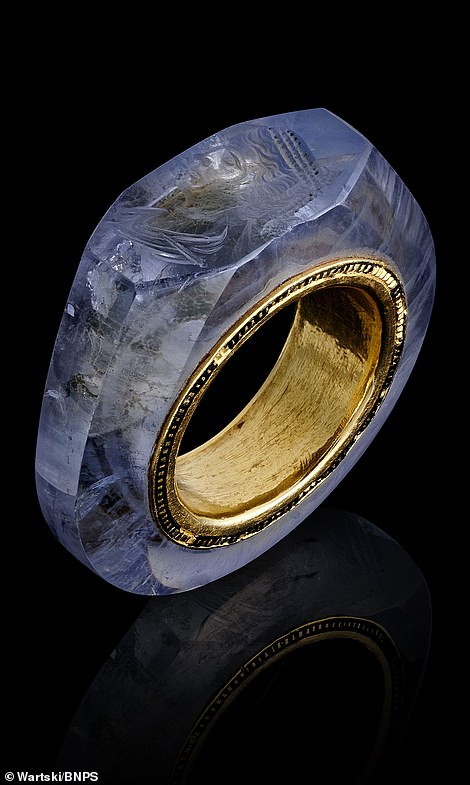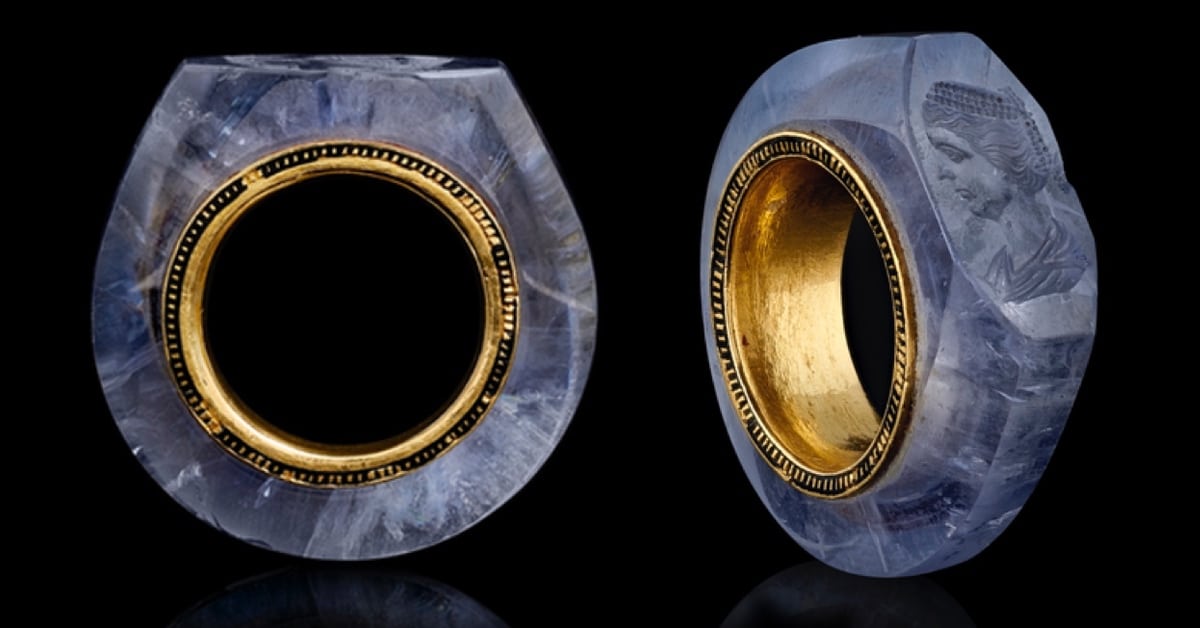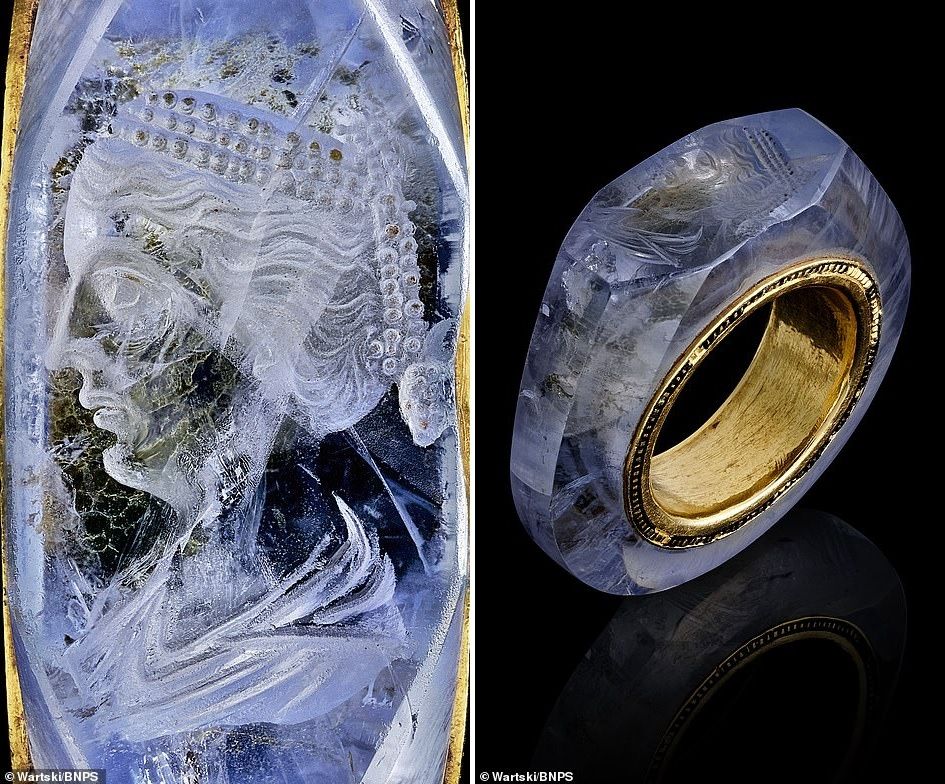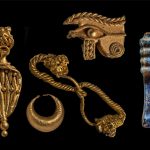An exquisite 2,000-year-old sapphire ring with an engraving of Caligula’s fourth wife, Caesonia, is thought to have belonged to the Roman emperor.

An exquisite 2,000-year-old sapphire ring, thought to have belonged to the infamous Roman Emperor Caligula, stands as a remarkable testament to the opulence and extravagance of ancient Rome. This sky-blue hololith, meticulously crafted from a single piece of sapphire, captivates historians, archaeologists, and jewelry enthusiasts alike with its historical significance and intricate beauty.
Emperor Caligula, who ruled from 37 AD until his assassination in 41 AD, is one of the most notorious figures in Roman history. Known for his eccentricity, excesses, and often tyrannical behavior, Caligula’s reign was marked by controversy and scandal. The ownership of such a magnificent piece of jewelry aligns with the historical accounts of his lavish lifestyle and his penchant for luxury.

The ring itself is a masterpiece of ancient craftsmanship. Hololith rings, carved from a single piece of stone, were rare and highly prized in the ancient world due to the skill required to create them. This particular ring’s deep sky-blue hue would have made it a standout piece, signifying not only wealth but also the advanced techniques and artistic capabilities of Roman jewelers. The smooth, unbroken surface of the sapphire, combined with the intricate engraving on the bezel, showcases the exceptional talent of the artisans who created it.
The most striking feature of the ring is the face engraved into the bezel. This engraving is believed to depict Caesonia, Caligula’s fourth and final wife. Historical accounts describe Caesonia as an exceptionally beautiful woman, so captivating that Caligula reportedly paraded her naked before his friends to show off her beauty. The choice to engrave her likeness onto such a precious ring underscores her importance to Caligula and his desire to immortalize her beauty.

The depiction of Caesonia on the ring not only highlights her physical allure but also provides insight into the personal and intimate aspects of Caligula’s life. Such a piece of jewelry would likely have been worn by Caligula himself or given as a gift to Caesonia, symbolizing his affection and the high regard in which he held her. The detailed engraving would have required a masterful hand, capable of capturing her likeness in the hard, unforgiving surface of the sapphire.
The ring’s survival over two millennia is a testament to both its craftsmanship and the durability of the materials used. Sapphires, being one of the hardest gemstones, can endure through the ages with minimal wear, preserving the intricate details of the engraving. This durability has allowed the ring to retain its beauty and historical significance, offering a tangible connection to the past.

Today, the sapphire ring believed to have belonged to Caligula is more than just a piece of ancient jewelry; it is a historical artifact that offers a glimpse into the opulent world of Roman emperors and their courts. It speaks to the wealth, power, and personal lives of those who once ruled one of the greatest empires in history. The ring is a poignant reminder of the human aspects of history, illustrating how personal adornments can carry stories of love, beauty, and power across the centuries.
In conclusion, the 2,000-year-old sapphire ring thought to have belonged to Emperor Caligula is a stunning example of ancient Roman craftsmanship and luxury. The sky-blue hololith, crafted from a single piece of precious stone, features an engraved likeness of Caesonia, Caligula’s fourth wife, celebrated for her exceptional beauty. This ring not only exemplifies the opulence of Caligula’s reign but also serves as a historical artifact that provides a deeply personal connection to the past, preserving the legacy of one of Rome’s most infamous emperors and his beloved wife.









